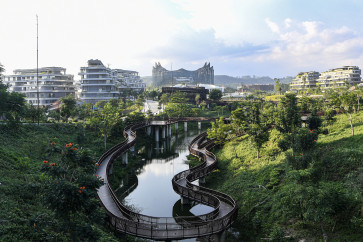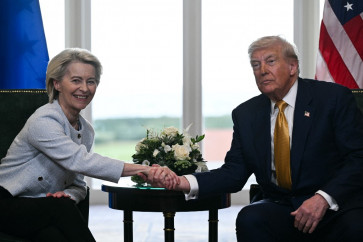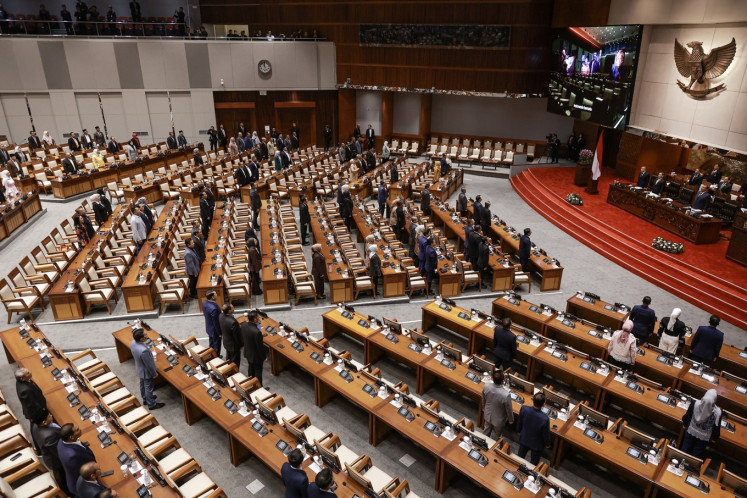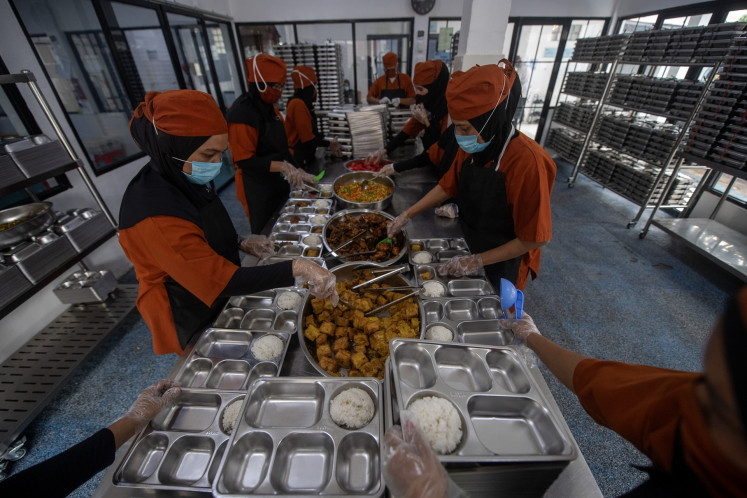Popular Reads
Top Results
Can't find what you're looking for?
View all search resultsPopular Reads
Top Results
Can't find what you're looking for?
View all search resultsNational history comes alive in a walking tour through Cikini
Twenty-four-year-old Desy Setyo raptly listened to guide Candha Adwitiyo as the latter briefed her group on the historic buildings they were set to visit over the course of a two-hour walking tour in Cikini, Central Jakarta
Change text size
Gift Premium Articles
to Anyone
T
wenty-four-year-old Desy Setyo raptly listened to guide Candha Adwitiyo as the latter briefed her group on the historic buildings they were set to visit over the course of a two-hour walking tour in Cikini, Central Jakarta.
'I often pass this area, but I don't know much about its history,' said Desy, who has been in Jakarta
for a year.
The private-sector employee said she had joined the tour because she loved history, adding that she planned to visit other historic parts of the city to gain further insight.
Another participant in the recent tour, Diana Simorang, 29, said she had been unaware that many important national events had occurred in Cikini. 'I'm a Jakartan, but I knew very little about this area,' she said.
The tour began at an old white building called the Joang 45 Museum 'joang is an old spelling of juang, which means 'struggle'' on Jl. Menteng Raya.
Candha said the building initially served as a hotel in the 1920s, before being used to house Indonesian students when Japanese troops occupied what was then Batavia in the 1940s.
'Japan housed young Indonesians to indoctrinate them with the idea that Japan was the right leader for Asia,' Candha explained.
Some youths housed in the hotel were immune to the propaganda, though, and secretly gathered the other youths to teach them about political movements, thus conceiving the plan for the declaration of Indonesian independence, said Candha.
'This museum plays a significant role in our independence,' he said.
The guide then invited the group to visit an old post office on Jl. Cikini Raya, around five minutes' walk from the museum.
The group lingered a while at the European-style post office. Candha told each of the participants to send a postcard to anyone they wanted to 'experience the sensation of sending physical letters'.
Another couple of minutes' walk and into the tourists' sight came the Cikini Teachers' Foundation schools complex where, the guide said, all of first president Sukarno's children had studied, and where an attempt to assassinate Sukarno had been made.
In the complex, in November 1957, a man threw five grenades, one of which did not explode, toward Sukarno. According to Candha, the grenades failed to kill the president because he was protected by his security guards, but the explosion did kill nine students and a pregnant woman and injured 50 others.
Before ending the tour, Candha took the group to Jl. Surabaya, located not far from the schools complex, inviting the group to browse the vintage items on sale there.
The tour was organized by the Jakarta Good Guide and is one route among many, including Menteng and Pasar Baru in Central Jakarta. To book a tour, participants can contact jakartagoodguide@gmail.com. The tour is free but donations are welcome.










